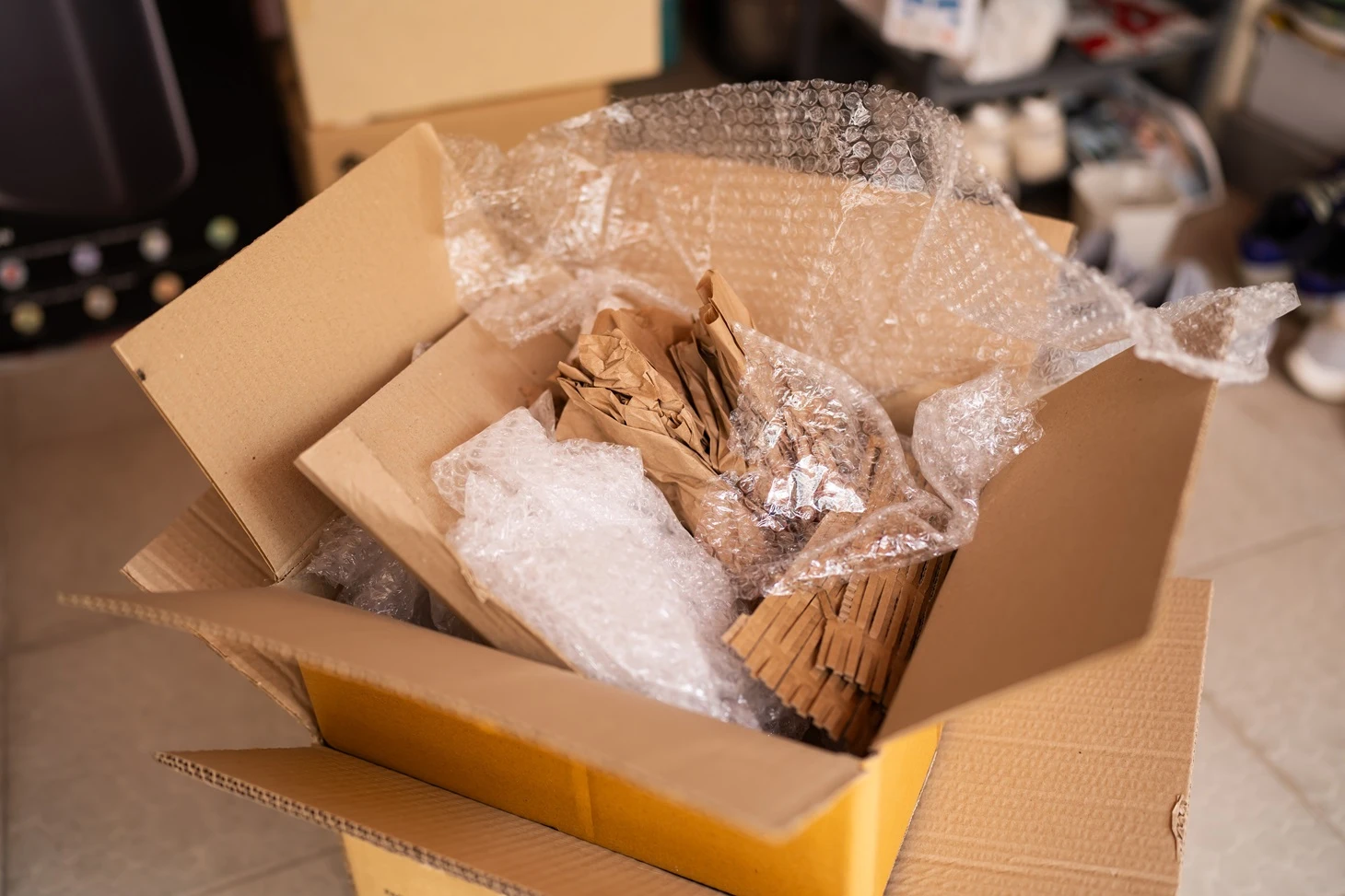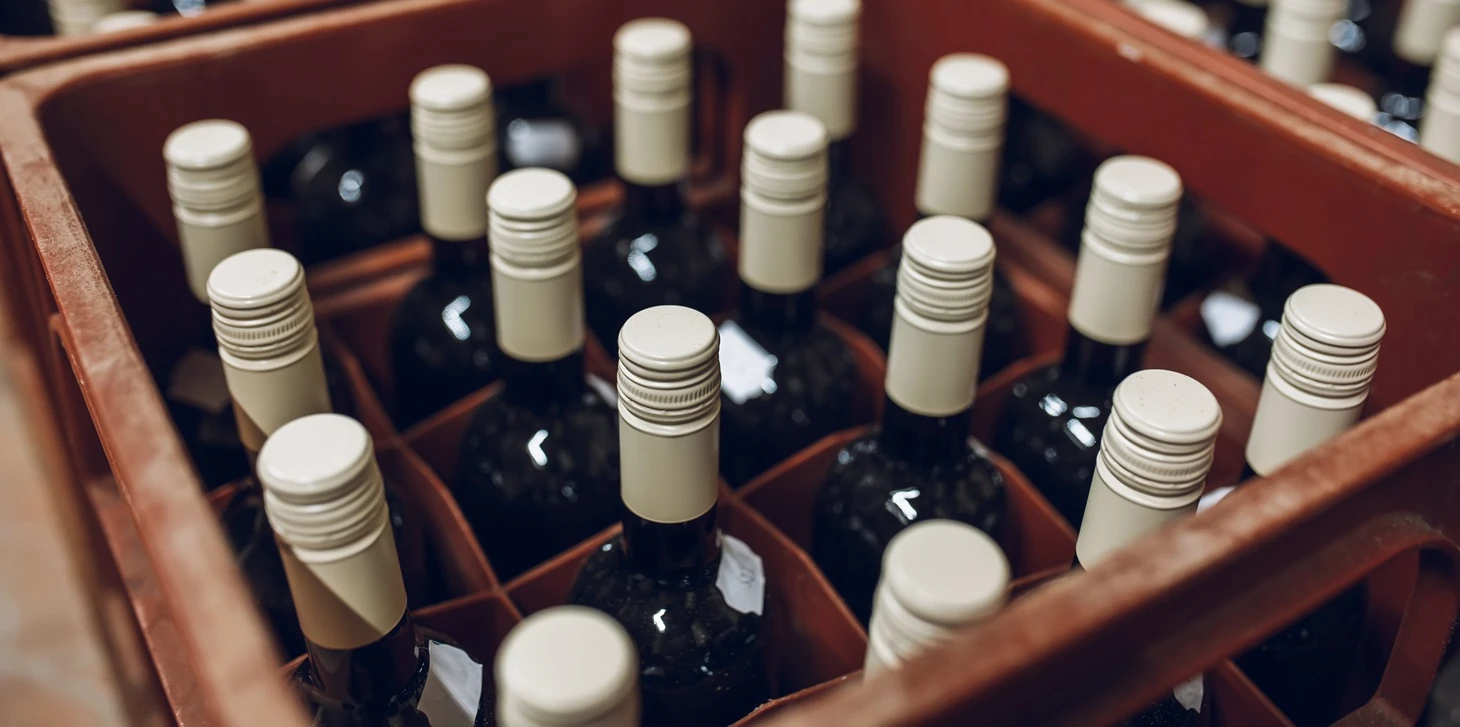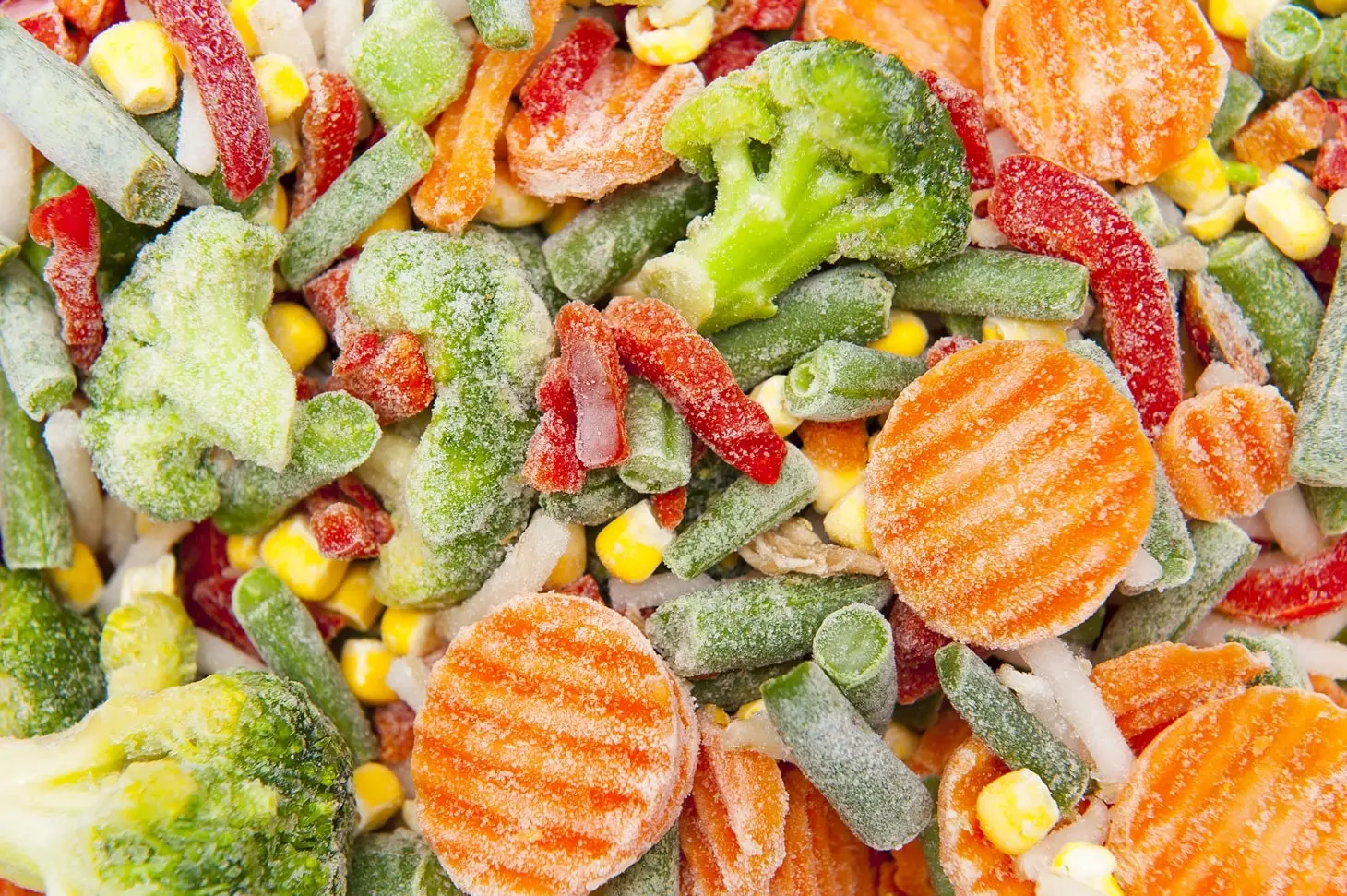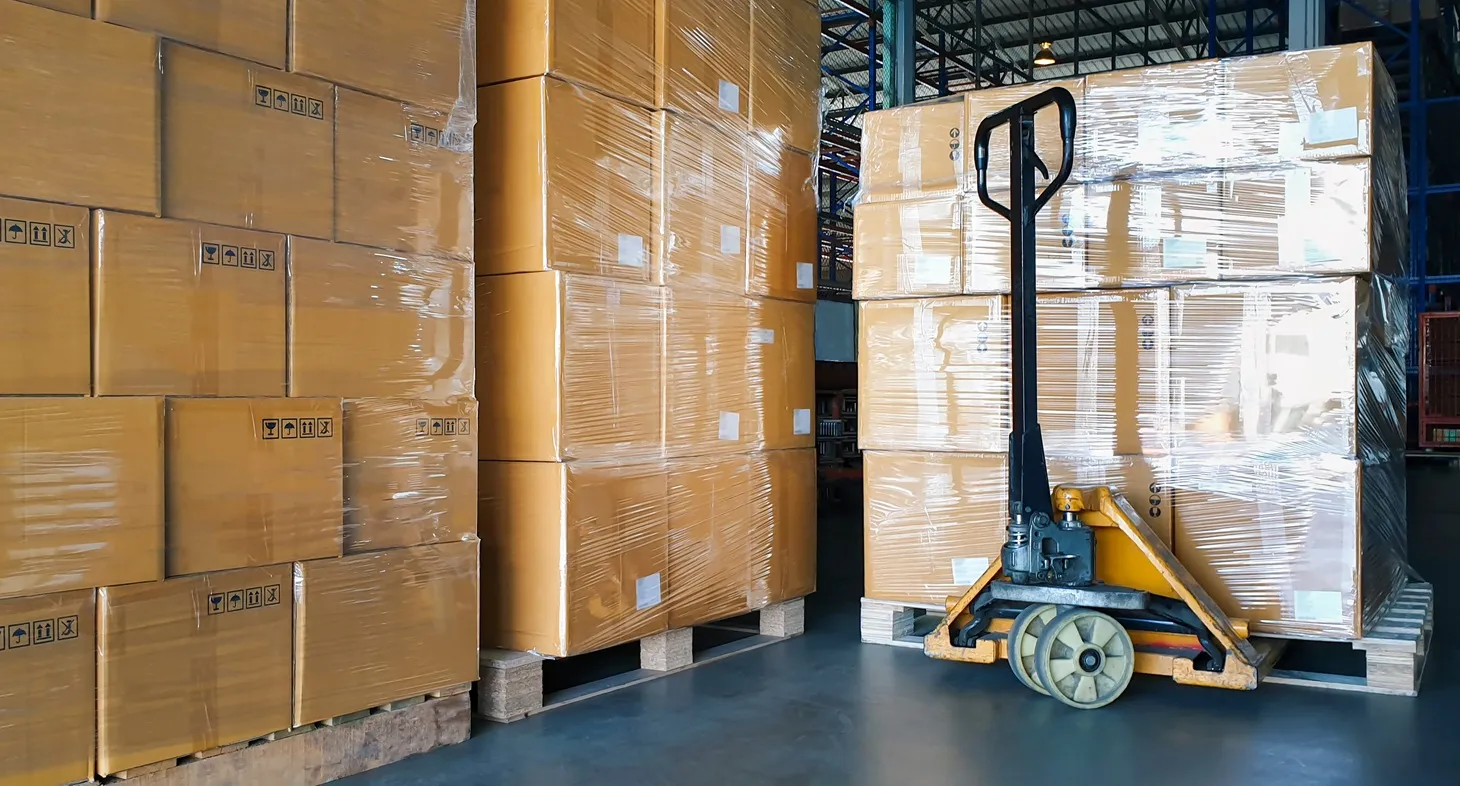Table of Contents
The global packaging waste crisis is urgent. Consumers all around the world are demanding sustainable solutions, and at Brandt Box, we’re proud to provide the expertise and eco-friendly options to help you meet this growing need. With decades of experience, we help businesses across industries reduce their waste.
As a non-stop box packaging supplier, our experienced team has put together this guide where you can explore actionable steps to minimize packaging waste, use sustainable materials and efficient processes, boost your brand image, and reduce costs.
If you have any questions about how we can help you, don’t hesitate to contact us today! Our expert consultants are ready to help you find the best solutions.

Step-by-Step Guide to a Packaging Audit
Reducing packaging waste starts with a clear understanding of your current practices. A detailed audit will help you identify opportunities to minimize waste and adopt more sustainable practices. Consider using a spreadsheet or dedicated audit form to document your findings. Here are our recommended steps for comprehensive analysis.
1. Materials Inventory
In this step, create a comprehensive list of all packaging materials used, quantifying their usage, and noting their source. This data helps identify materials with the greatest potential for improvement.
- List all packaging materials (paperboard, plastics, etc.) and their quantities.
- Specify material types and grades for greater accuracy.
- Note the source to understand the sustainability of materials.
2. Packaging Dimensions
In this step, analyze package dimensions to find areas where you can downsize. Smaller boxes can significantly reduce material use and transportation costs while ensuring your products are protected.
- Accurately measure the length, width, and height of each package.
- Compare package size to product size and identify excessive space.
- Explore smaller box options while maintaining product safety.

3. Void Fill Analysis
This step involves determining the type and amount of void fill in each of your current packages to its efficiency and identifying opportunities to replace unsustainable fillers.
- Quantify void fill (packing peanuts, air pillows, etc.) used per package.
- Identify void fill materials (e.g., EPS, biodegradable alternatives).
- Evaluate if the current void fill offers efficient product protection.
4. End-of-Life Assessment
Determine the recyclability or compostability of your packaging materials to see if they are compatible with your local waste management systems. Otherwise, they’re destined for landfill.
- Identify recyclable materials and relevant certifications (e.g., FSC).
- Determine compostable materials and the availability of composting facilities.
- Note non-recyclable/non-compostable materials that need replacement.
- Review your current recycling and waste disposal processes.
Note! Consumers increasingly prioritize sustainability and are choosing brands that align with their values. Sustainable packaging enhances your brand image and provides a competitive edge. Incorporate relevant statistics showcasing this consumer preference shift to inform your packaging choices.
Implementing Effective Waste Reduction Strategies
In this section, we detail actionable strategies for minimizing packaging waste, including material choices, design optimization, and process improvements.
Right-Sizing Your Packaging for Efficiency
The practice of using the smallest possible package that still effectively protects your product offers a surprisingly impactful approach to waste reduction. In fact, it creates a ripple effect across your entire operation. Once you carefully evaluate your current packaging and product dimensions, you can often identify significant opportunities for downsizing without compromising product integrity.
Excessive void fill is a major source of waste. Here are some strategies to avoid this:
- Biodegradable peanuts: Switch from polystyrene peanuts to plant-based, compostable alternatives.
- Paper-based fillers: Utilize shredded paper, honeycomb cardboard, or other eco-friendly fillers.
- Innovative designs: Design products and packaging to minimize space and eliminate the need for excessive void fill. Consider custom-fit inserts or interlocking designs.
Smart package design minimizes waste without compromising product safety. Use right-sized, lightweight materials, minimalist aesthetics, and flat-pack designs to reduce your materials and shipping costs.

Choosing Sustainable Packaging Materials
Consumers are becoming more aware of and concerned about environmental issues, favoring companies that demonstrate a commitment to sustainability. This is why it’s so important to make informed choices about the materials you use as you can significantly reduce your environmental impact and enhance your brand’s image.
- Recycled paperboard: Choose paperboard with high recycled content (ideally 100% post-consumer waste) and certifications like FSC for responsible sourcing. Select the appropriate grade for required strength and durability.
- Bioplastics (PLA, PHA): Bioplastics, made from renewable resources, offer biodegradability or compostability. However, production methods and end-of-life management require careful consideration such as research certifications and sourcing.
- Compostable packaging: Innovative compostable materials (seaweed, mushroom packaging) fully break down in industrial composting. Check for certifications and consider local infrastructure availability as applications may be limited.
- Reusable packaging: Reusable packaging systems drastically cut waste. Explore product redesign for reuse, reusable containers, or partnerships for reverse logistics to carefully evaluate practicality and cost.
Optimizing Your Packaging Process
By now, we’ve established that efficient packaging processes play a vital role in minimizing waste. However, this goes beyond material choices and design; it involves streamlining your entire workflow to maximize efficiency and reduce waste at every stage. Evaluate it from every angle to find areas for improvement.
- Automation: Automated packaging systems significantly improve efficiency and precision, reducing errors and material waste. This includes automated box-making machinery, robotic palletizing systems, and automated tape applications.
- Just-in-time (JIT) inventory: JIT inventory management reduces storage space and minimizes excess materials by aligning material delivery with production needs. This can help you cut down on obsolete inventory. For a successful JIT approach, be sure to collaborate effectively with your suppliers.
- Improved warehouse management: Efficient warehouse practices are crucial for minimizing waste. This includes storing your packaging materials properly to prevent damage or spoilage. You should also prioritize efficient organization and handling to reduce errors and implement clear procedures for waste segregation and disposal.
While these strategies are incredibly beneficial, they require careful planning and execution. At Brandt Box, we encourage you to conduct a thorough audit combined with a commitment to sustainable practices. This will pave the way towards a greener and more efficient packaging process that attracts and keeps more customers.
Building Transparency and Communicating Your Commitment
Communicating your commitment to sustainable packaging is crucial for building trust with consumers and enhancing your brand image. Sustainability is a core value for many consumers, and demonstrating your commitment can significantly impact your brand reputation and bottom line.
In this section, we explore effective communication strategies and the importance of eco-certifications. As a result, you’ll have actionable steps to build consumer trust and demonstrate your dedication to responsible practices.
Effective Communication Strategies
Transparency and authenticity are paramount when communicating your sustainability initiatives. Avoid greenwashing — marketing that exaggerates or misrepresents a product’s environmental benefits. Instead, focus on factual information and demonstrable actions. A well-defined communication strategy helps ensure your message resonates with your target audience.
- Product packaging: Don’t hesitate to communicate your sustainable packaging choices directly on your product packaging. Use simple, clear language and impactful visuals. Highlight key features like recycled content percentages, compostability, or biodegradability. Consider using certification logos (see below).
- Website and marketing materials: Dedicate a section of your website to detail your sustainability efforts, including your packaging choices. Use visuals and infographics to showcase your commitment. Highlight the environmental and social benefits of your choices. Your messaging across platforms should be consistent and maintain transparency.
- Social media: Share your sustainability story on social media as it’s an easy way to engage with customers and answer their questions about your packaging choices. Showcase your commitment to responsible manufacturing and ethical sourcing, and use visuals that connect with your brand’s values.
- Press releases and public relations: Issue press releases highlighting your sustainability initiatives, including your packaging choices. Share your story with relevant media outlets and industry publications to reach a broader audience.
- Sustainability reports: Consider creating a regular sustainability report detailing your progress and outlining your ongoing sustainability goals. This demonstrates accountability and reinforces your commitment.
Also, eco-certifications (FSC, compostable, recycled content) and clear labeling build consumer trust and verify your sustainability claims. We encourage you to use recognizable logos and concise, easy-to-understand language, including disposal instructions. Highlighting your certifications is a simple but effective way to demonstrate your commitment to responsible packaging.

Embracing a Holistic Approach to Sustainability
Sustainable packaging is just one piece of a larger puzzle. A truly holistic approach integrates sustainability throughout your entire business model, aligning with broader environmental goals and creating long-term value.
Beyond Packaging: A Circular Economy Approach
Sustainable packaging aligns perfectly with the principles of a circular economy — a system aimed at minimizing waste and maximizing resource utilization. Instead of a linear “take-make-dispose” model, a circular economy emphasizes:
- Design for reuse and recycling: Designing products and packaging for easy disassembly, reuse, and recyclability.
- Waste reduction at the source: Minimizing waste generation through innovative design and efficient processes.
- Material recovery and recycling: Implementing robust recycling programs to recover valuable materials from discarded packaging.
- Sustainable sourcing: Sourcing materials from responsibly managed sources to minimize environmental impact.
A circular economy mindset allows you to move beyond simply using sustainable packaging to creating a more sustainable business model overall.
Life Cycle Assessment (LCA)
A life cycle assessment (LCA) is a valuable tool for evaluating the environmental impact of your packaging from “cradle to grave”. An LCA analyzes the environmental burdens associated with each stage of the packaging’s life cycle, from raw material extraction and manufacturing to transportation, use, and disposal. It’s a comprehensive analysis that identifies areas for improvement and helps you make informed decisions about material selection, design, and end-of-life management. While conducting a full LCA might require specialized expertise, understanding its principles is crucial for making informed sustainability choices in the big picture.

Take Action for a Greener Future with Brandt Box
Start your journey towards sustainable packaging today! Begin with a comprehensive packaging audit to identify your current waste levels. Then, prioritize right-sizing your packaging, transitioning to sustainable materials, and optimizing your packaging process for greater efficiency.
There’s no better partner than Brandt Box on this journey. We have over 70 years of experience and have over 20,000 items available for immediate delivery. With us, you can expect quality, competitive pricing, and hands-on service. We’re passionate about helping you transform your business’ packaging for a greener future!
Call Brandt Box today at (847) 541-7000 to discuss your needs and learn how we can help you achieve your sustainability goals.











